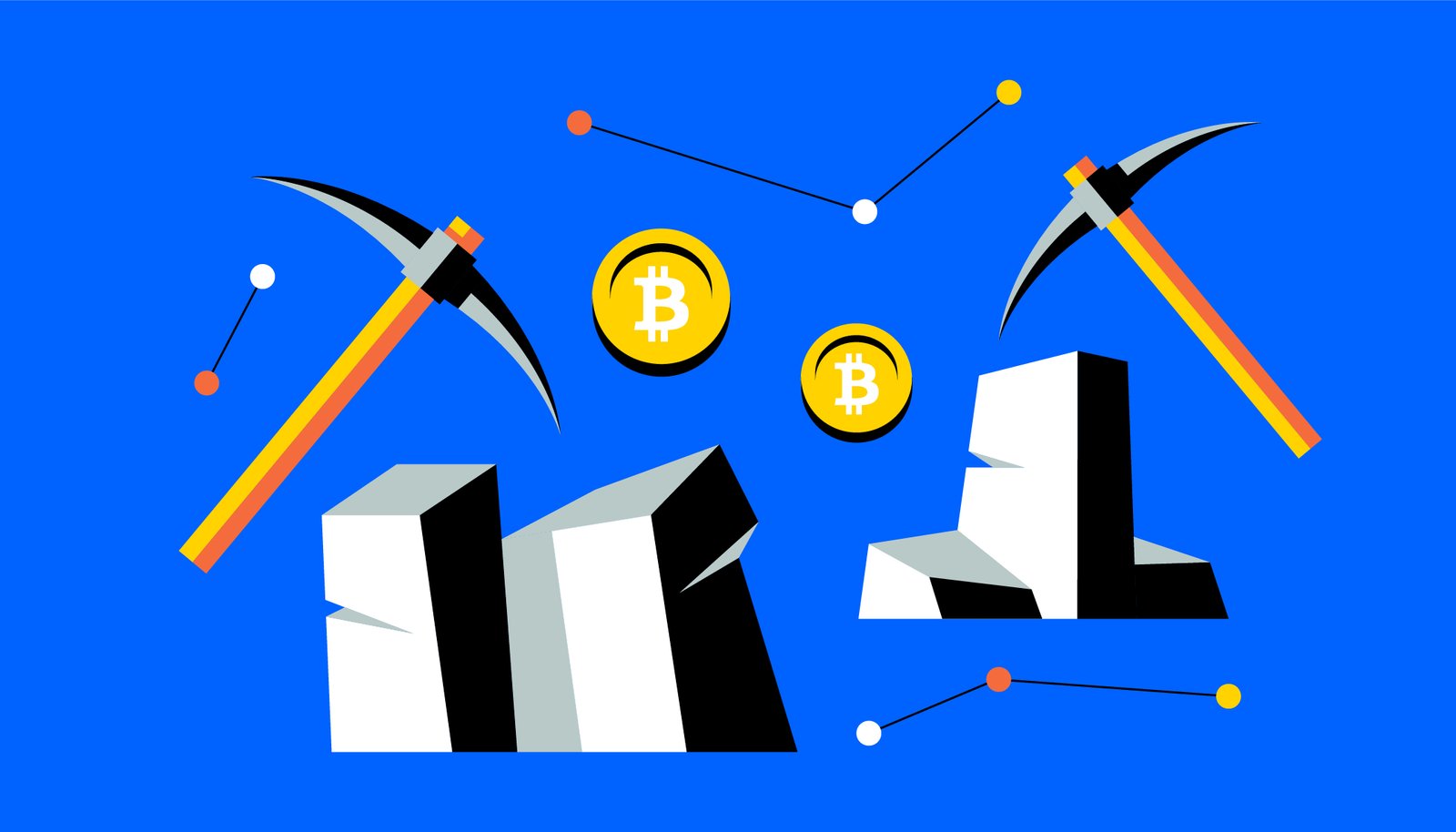A Beginner’s Guide to Crypto Mining: What You Need to Know
Cryptocurrency mining is a popular way for individuals to participate in the digital currency ecosystem. As cryptocurrencies like Bitcoin, Ethereum, and others gain mainstream attention, many people are curious about mining—how it works, what equipment is needed, and if it’s a viable way to earn cryptocurrency. This guide will walk you through the basics of crypto mining and help you understand what’s involved.
What is Crypto Mining?
At its core, crypto mining is the process of using computer hardware to solve complex mathematical problems. When a problem is solved, the miner (the person or computer solving the problem) is rewarded with a certain amount of cryptocurrency. Mining is essential to the functioning of many cryptocurrencies because it ensures the integrity of the blockchain, the decentralized ledger that records all transactions.
Mining also plays a key role in adding new coins to the circulating supply of a cryptocurrency. For instance, in Bitcoin’s case, miners are rewarded with new Bitcoins for validating transactions and securing the network.
Types of Crypto Mining
There are several types of crypto mining, each with different requirements and rewards:
1. Solo Mining: This is where an individual miner uses their own equipment to mine cryptocurrency independently. This method requires substantial investment in high-performance hardware and incurs high electricity costs. The reward is also not consistent, as it depends on how often the miner solves a block.
2. Pool Mining: In this method, multiple miners combine their computational power to increase the chances of solving a block. The rewards are split among the participants based on the amount of work they contribute. Pool mining is more popular among beginners as it provides more regular payouts compared to solo mining.
3. Cloud Mining: This allows individuals to rent mining hardware from a data center. Cloud mining offers a hassle-free entry into mining without needing to invest in expensive equipment or manage the hardware. However, it involves trust in the service provider and may have hidden fees.

What You Need to Start Mining
To get started with crypto mining, you’ll need several key components:
1. Mining Hardware: The type of hardware you need depends on the cryptocurrency you want to mine. For Bitcoin, specialized hardware called ASICs (Application-Specific Integrated Circuits) is used because they are far more efficient than general-purpose CPUs or GPUs. For other cryptocurrencies, like Ethereum, high-performance GPUs (Graphics Processing Units) are still effective.
2. Mining Software: This is the program that connects your mining hardware to the blockchain network. There are many different mining software options available, each tailored to different hardware types and cryptocurrencies. Examples include CGMiner, BFGMiner, and EasyMiner.
3. Digital Wallet: You need a digital wallet to store the cryptocurrency you earn from mining. Wallets can be software-based (online, desktop, or mobile) or hardware-based (physical devices like Ledger or Trezor).
4. Reliable Internet Connection: A stable and high-speed internet connection is essential for mining. This ensures your mining software remains connected to the blockchain network without interruptions.
5. Electricity: Mining is power-intensive, especially if you’re using ASICs or multiple GPUs. It’s important to calculate the electricity costs and ensure you have access to affordable power to keep mining profitable.
The Process of Mining Cryptocurrency
Once you have the necessary equipment and software, the mining process involves the following steps:
1. Setup: Install the mining software and configure it to connect to the desired mining pool or set up solo mining. Input your wallet address to ensure your rewards are sent to the right place.
2. Start Mining: Run the mining software to start solving cryptographic puzzles. The software will use your hardware’s processing power to validate transactions and try to solve blocks.
3. Receive Rewards: Once a block is solved, the mining pool or network distributes the rewards. If you’re solo mining, you receive the entire reward, but if you’re pool mining, you’ll receive a portion based on your contribution.
Is Crypto Mining Profitable?
Profitability in crypto mining depends on several factors:
– Cost of Electricity: Mining consumes a lot of power. Miners need to consider the cost of electricity in their region and calculate if the rewards outweigh the costs.
– Hardware Efficiency: The efficiency of mining hardware (hash rate per watt) significantly impacts profitability. More efficient hardware provides more computing power for less electricity.
– Cryptocurrency Value: The value of the mined cryptocurrency directly affects profitability. The volatile nature of crypto markets means that mining profits can vary widely.
– Network Difficulty and Hash Rate: The difficulty of mining a block changes over time and is designed to ensure that blocks are mined at a steady rate. As more miners join the network and contribute computing power, the difficulty increases, making it harder and less profitable to mine.
Risks and Considerations
– Initial Investment: The upfront cost of mining hardware can be significant. Additionally, ASIC miners quickly become obsolete as new, more efficient models are released.
– Regulatory Environment: Cryptocurrency mining regulations vary by country and can change rapidly. Some countries have banned crypto mining or imposed strict regulations due to energy consumption concerns.
– Market Volatility: Cryptocurrency prices are highly volatile. A sudden drop in the value of a cryptocurrency can turn a profitable mining operation into a loss-making one.
Conclusion
Crypto mining can be a profitable venture for those who are prepared to invest time and money into the necessary equipment and understand the risks involved. For beginners, starting with pool mining or cloud mining may be the most accessible option. However, it is essential to conduct thorough research and consider all factors before diving into crypto mining. As the cryptocurrency landscape continues to evolve, staying informed about the latest trends and technologies will be key to success in this space.
Final Thoughts
As with any investment, cryptocurrency mining requires a careful approach and understanding of the potential risks and rewards. Whether you’re looking to mine as a hobby or a serious business endeavor, a clear strategy and awareness of the changing market conditions will help you navigate the exciting world of crypto mining.


